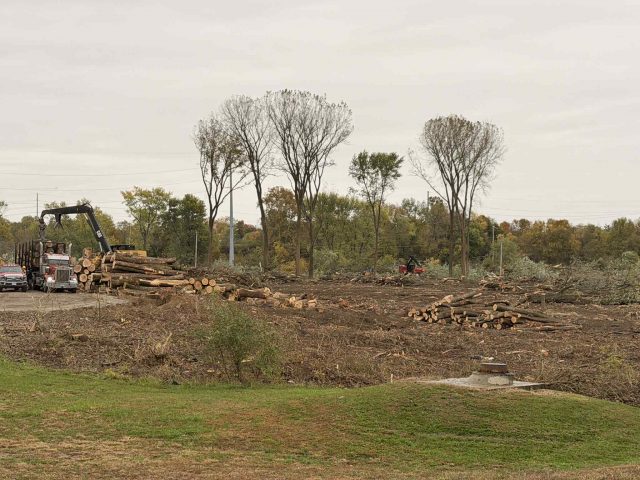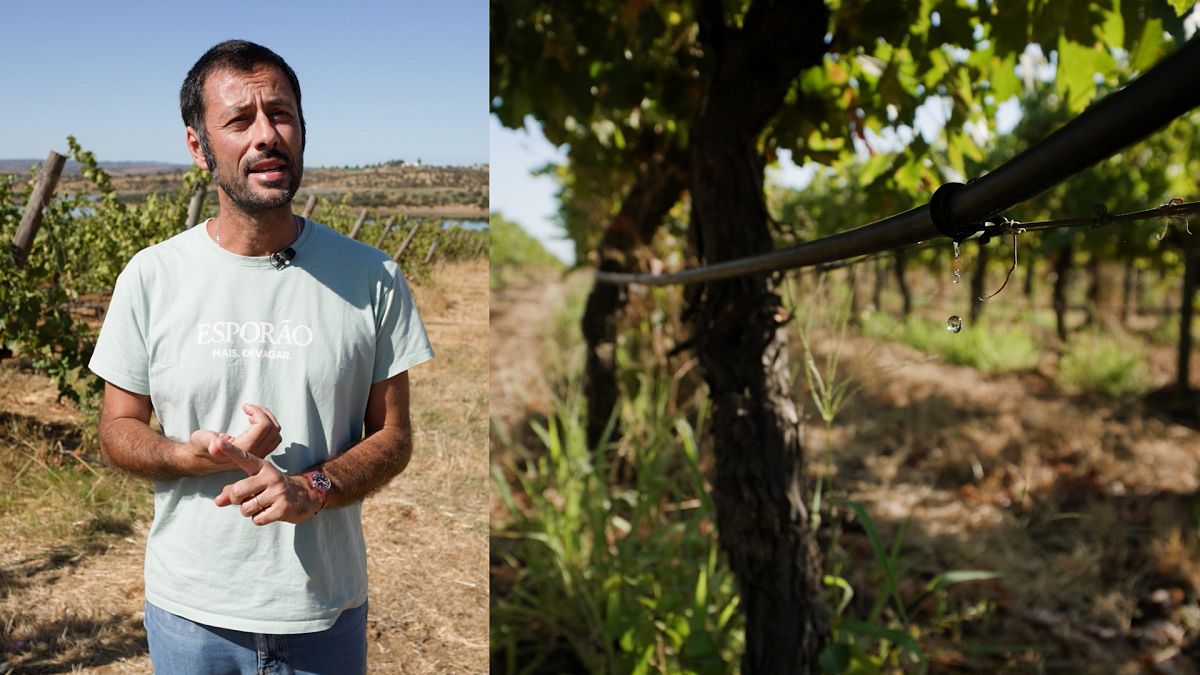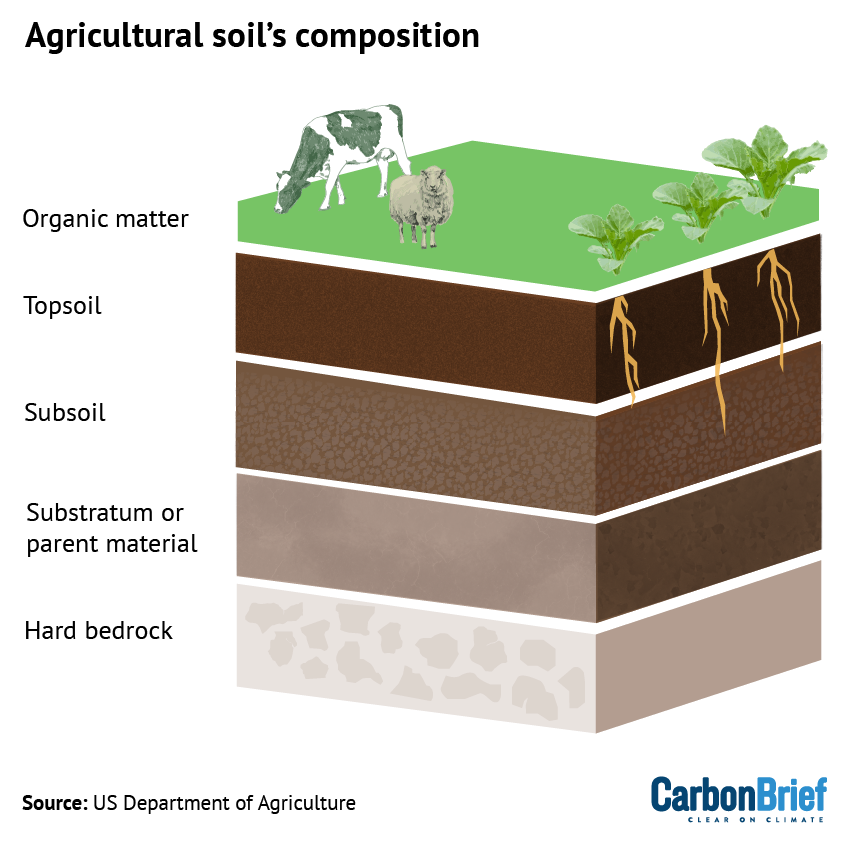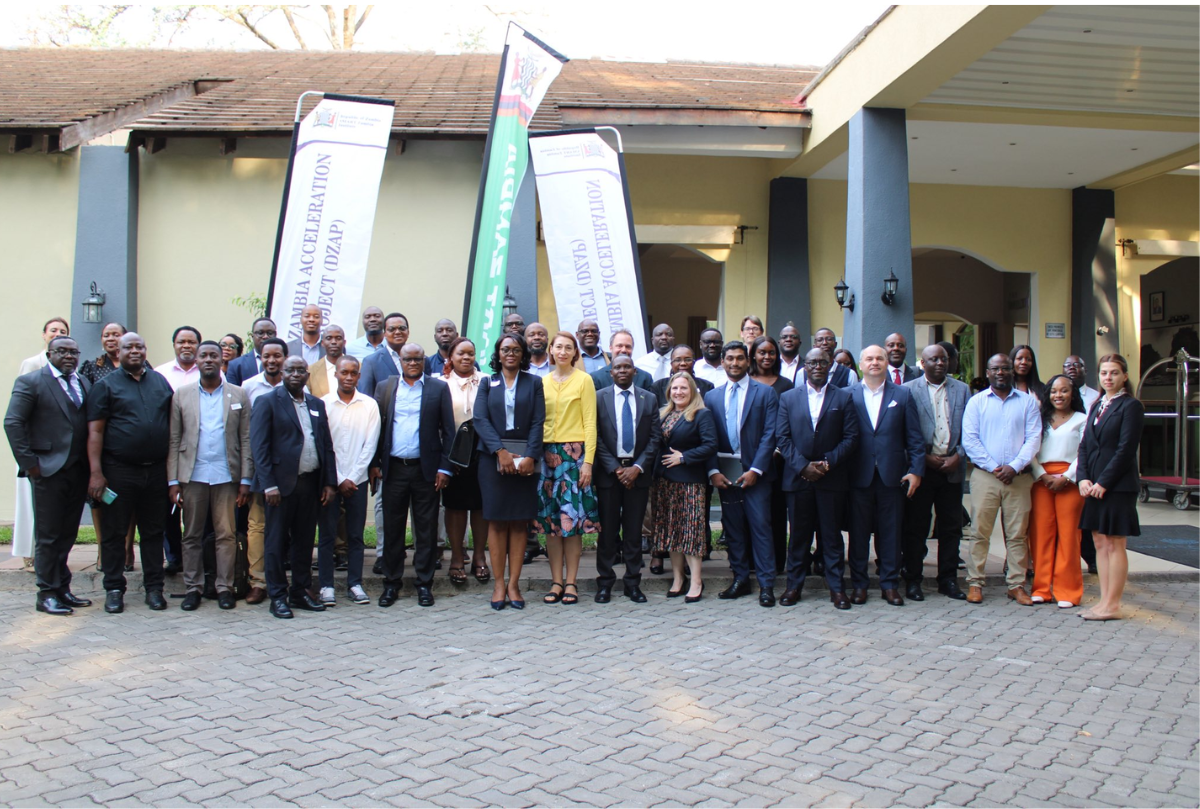Leaf economic strategies drive global variation in phosphorus stimulation of terrestrial plant production – Nature


Report on the Global Impact of Phosphorus Addition on Terrestrial Plant Biomass and Allocation: Emphasizing Sustainable Development Goals
Abstract
Plant biomass and its allocation are essential for understanding biospheric matter production, which directly relates to ecosystem health and carbon cycling, thereby influencing climate action (SDG 13) and life on land (SDG 15). This report synthesizes 5,548 global observations on the effects of atmospheric phosphorus (P) deposition on species-specific biomass and allocation in terrestrial plants. Findings reveal that phosphorus addition increases plant biomass by an average of 35% worldwide, with variation among plant functional groups. Notably, deciduous (45%), C3 (36%), and nitrogen-fixing plants (54%) show stronger biomass responses compared to evergreen (28%), C4 (19%), and non-nitrogen-fixing plants (31%). Plants with acquisitive traits (e.g., higher nutrient concentrations, specific leaf area, faster photosynthesis, shorter leaf lifespan) are particularly responsive to P addition. Additionally, phosphorus addition promotes greater biomass allocation to aboveground organs, decreasing the root-to-shoot ratio by 5%. These insights are critical for predicting terrestrial carbon storage responses to increasing atmospheric phosphorus deposition, supporting climate resilience and sustainable ecosystem management.
Introduction
Understanding plant biomass and its allocation is vital for ecosystem function and global carbon cycles, contributing to SDG 13 (Climate Action) and SDG 15 (Life on Land). Nutrient availability, especially phosphorus, is a key limiting factor for plant growth and reproduction. Anthropogenic activities have increased phosphorus inputs into terrestrial ecosystems, impacting plant growth and carbon stocks. However, species-specific responses to phosphorus addition remain uncertain, complicating predictions of future terrestrial carbon dynamics.
Variation in Plant Functional Groups and Phosphorus Response
- Different plant functional groups exhibit diverse phosphorus acquisition and nutrient use strategies, influencing their biomass response to phosphorus addition.
- Shrubs with deep roots and potent phosphorus mobilization adapt better to low-phosphorus soils, while graminoids with shallow roots respond more to phosphorus addition.
- Leaf habit (deciduous vs. evergreen) and photosynthetic pathways (C3 vs. C4) also modulate phosphorus response.
- Nitrogen-fixing plants generally have higher phosphorus demand due to the energy cost of nitrogen fixation.
Leaf Functional Traits and Biomass Response
The leaf economics spectrum (LES) framework identifies key traits that reflect a trade-off between fast resource acquisition and conservation. Plants with acquisitive traits (high specific leaf area, nutrient concentrations, photosynthetic rates, and short leaf lifespan) tend to grow faster and respond more to phosphorus addition, which is crucial for achieving SDG 15 by promoting healthy terrestrial ecosystems.
Biomass Allocation Strategies
Plants adaptively allocate biomass among organs to optimize resource acquisition. Phosphorus addition is hypothesized to shift biomass allocation towards aboveground organs, enhancing photosynthetic capacity and growth, thereby supporting carbon sequestration efforts aligned with SDG 13.
Results
Phosphorus Addition Effects on Plant Biomass Across Functional Groups
- Phosphorus addition increased terrestrial plant biomass by 35% on average globally, with positive responses in 89% of cases.
- No significant phylogenetic signal was detected, indicating similar responses across evolutionary groups.
- Biomass increases varied among functional groups:
- Trees: 38%
- Shrubs: 31%
- Graminoids: 27%
- Forbs: 36%
- Significant differences were found based on nitrogen-fixing capability, leaf habit, and photosynthetic pathway:
- Nitrogen-fixing plants: 54% increase
- Non-nitrogen-fixing plants: 31% increase
- Deciduous plants: 45% increase
- Evergreen plants: 27.5% increase
- C3 plants: 36% increase
- C4 plants: 19% increase
- Controlled environments showed greater biomass responses compared to field environments.
Correlation Between Biomass Response and Leaf Economics Traits
- Positive correlation between phosphorus addition effect and acquisitive leaf traits (high specific leaf area, leaf nitrogen concentration, fast photosynthesis, short leaf lifespan).
- Negative correlation with leaf carbon-to-nitrogen ratio.
- Abiotic factors such as mean annual temperature, precipitation, fertilization duration, and phosphorus addition rates also positively correlated with biomass response.
- Soil nutrient richness (total nitrogen and phosphorus) and pH negatively correlated with biomass response, indicating reduced responsiveness in nutrient-rich soils.
Phosphorus Addition Effects on Biomass Allocation
- Phosphorus addition increased biomass in leaves (58%), stems (55%), and shoots (48%).
- Root and reproductive biomass increased less significantly (40% and 35%, respectively).
- Biomass allocation shifted towards aboveground organs, with increased leaf, stem, and shoot mass fractions and decreased root mass fraction and root-to-shoot ratio.
- Allocation responses were consistent across plant functional groups and showed limited correlation with leaf traits or abiotic factors.
Discussion
Implications for Sustainable Development Goals
- SDG 13 (Climate Action): Enhanced phosphorus availability increases plant biomass and carbon sequestration potential, contributing to climate change mitigation.
- SDG 15 (Life on Land): Understanding species-specific and trait-mediated responses to phosphorus supports biodiversity conservation and sustainable ecosystem management.
- Plant functional groups with different nutrient acquisition strategies respond variably to phosphorus addition, highlighting the need for tailored conservation and land management practices.
- Leaf economic strategies are key drivers of biomass response, emphasizing the importance of functional traits in ecosystem resilience.
- Phosphorus addition shifts biomass allocation towards aboveground organs, enhancing photosynthetic capacity and ecosystem productivity.
- These findings inform terrestrial biosphere models, improving predictions of carbon cycling and ecosystem responses under global change scenarios.
Key Findings and Recommendations
- Phosphorus addition globally increases terrestrial plant biomass by 35%, with stronger effects in nitrogen-fixing, deciduous, and C3 plants.
- Leaf functional traits reflecting acquisitive strategies predict stronger biomass responses to phosphorus.
- Biomass allocation shifts towards aboveground organs under phosphorus enrichment, supporting enhanced carbon uptake.
- Incorporating plant functional diversity and trait-based responses into ecosystem models is essential for accurate forecasting of carbon dynamics and ecosystem services.
- Management strategies should consider species-specific nutrient requirements and functional traits to optimize ecosystem productivity and carbon sequestration.
Methods
Data Collection
- Systematic literature search identified 317 publications with 5,548 observations on plant biomass responses to phosphorus addition.
- Data included controlled and field experiments, excluding treatments with combined nitrogen-phosphorus fertilizers and crops or transgenic plants.
- Environmental variables (climate, soil properties, fertilization regimes) and leaf functional traits were extracted or derived from global databases.
- Plant species were classified by growth form, mycorrhizal type, photosynthetic pathway, nitrogen-fixing capability, leaf habit, and morphology.
Data Analysis
- Effect size calculated using logarithmic response ratio (lnRR) to quantify phosphorus addition effects on biomass and allocation.
- Phylogenetic analyses assessed evolutionary patterns in biomass response.
- Linear mixed-effects models estimated average effects across functional groups and organs.
- Principal component analysis (PCA) characterized leaf economics spectrum (LES) traits.
- Boosted regression tree (BRT) and structural equation modeling (SEM) identified key drivers and direct/indirect effects on biomass response.
- Statistical rigor ensured through bootstrapping, publication bias testing, and model validation.
Conclusion
This comprehensive global analysis highlights the critical role of phosphorus in enhancing terrestrial plant biomass and altering biomass allocation patterns, mediated by plant functional traits and environmental factors. These findings contribute to achieving Sustainable Development Goals by informing climate action strategies (SDG 13) and promoting sustainable management of terrestrial ecosystems (SDG 15). Incorporating trait-based and functional group-specific responses into ecosystem models will improve predictions of carbon cycling and support global efforts to mitigate climate change and conserve biodiversity.
1. Sustainable Development Goals (SDGs) Addressed or Connected
- SDG 2: Zero Hunger
- The article discusses the impact of phosphorus (P) addition on plant biomass and productivity, which is directly related to improving agricultural productivity and sustainable food production.
- SDG 13: Climate Action
- By exploring how P addition affects terrestrial plant biomass and carbon storage, the article relates to climate change mitigation through enhanced carbon sequestration in ecosystems.
- SDG 15: Life on Land
- The article focuses on terrestrial ecosystems, plant functional groups, and nutrient cycling, which are critical for sustainable management and restoration of terrestrial ecosystems.
2. Specific Targets Under the Identified SDGs
- SDG 2: Zero Hunger
- Target 2.4: By 2030, ensure sustainable food production systems and implement resilient agricultural practices that increase productivity and production.
- The article’s findings on phosphorus addition increasing plant biomass by 35% globally support efforts to enhance sustainable agricultural productivity.
- SDG 13: Climate Action
- Target 13.2: Integrate climate change measures into national policies, strategies, and planning.
- The article’s insights into phosphorus-driven biomass accumulation and carbon storage inform climate mitigation strategies by improving terrestrial carbon sink models.
- SDG 15: Life on Land
- Target 15.1: Ensure the conservation, restoration, and sustainable use of terrestrial and inland freshwater ecosystems and their services.
- Target 15.3: Combat desertification, restore degraded land and soil, including land affected by desertification, drought, and floods.
- The study’s focus on nutrient cycling and biomass allocation contributes to understanding ecosystem functioning and restoration.
3. Indicators Mentioned or Implied for Measuring Progress
- Plant Biomass Increase (%)
- The article quantifies the effect of phosphorus addition on plant biomass, reporting an average increase of 35% globally, which can serve as an indicator of ecosystem productivity improvement.
- Biomass Allocation Patterns
- Changes in biomass allocation to aboveground vs. belowground organs (e.g., leaf, stem, root mass fractions, root-to-shoot ratio) are used to assess plant adaptation and resource use efficiency.
- Leaf Functional Traits
- Indicators such as specific leaf area (SLA), leaf nitrogen concentration ([N]), leaf phosphorus concentration ([P]), leaf C:N ratio, and leaf lifespan are used to predict plant responsiveness to phosphorus addition.
- Environmental and Soil Variables
- Mean annual temperature (MAT), mean annual precipitation (MAP), soil total nitrogen (N) and phosphorus (P) concentrations, soil pH, and fertilization duration and rates are implied indicators for assessing nutrient availability and ecosystem responses.
- Leaf N:P Ratio
- Used to classify nutrient limitation types (N limitation if N:P 20), which is relevant for monitoring nutrient status and ecosystem health.
4. Table of SDGs, Targets, and Indicators
| SDGs | Targets | Indicators |
|---|---|---|
| SDG 2: Zero Hunger | Target 2.4: Sustainable food production systems and resilient agricultural practices to increase productivity. |
|
| SDG 13: Climate Action | Target 13.2: Integrate climate change measures into policies and planning. |
|
| SDG 15: Life on Land |
|
|
Source: nature.com

What is Your Reaction?
 Like
0
Like
0
 Dislike
0
Dislike
0
 Love
0
Love
0
 Funny
0
Funny
0
 Angry
0
Angry
0
 Sad
0
Sad
0
 Wow
0
Wow
0














































































